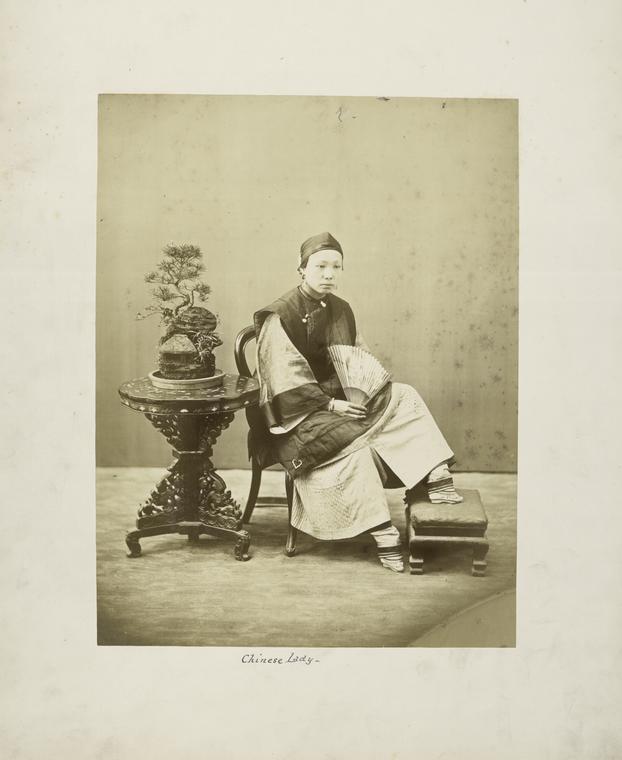
|

|
|
|
|
The Front Terrace and Drive at Box Hill (c.1895) were embellished with a curious assortment of plants and
ornament: bonsai from Japan, clipped evergreen, orange, and bay trees reminiscent of the gardens of France, and terra-cotta
oil jars from Italy. Surprisingly, none of this seemed incongruous to the Victorian frame of mind. Like signatures
collected in an autograph book, each element simply suggested another time or place, without requiring an accurate
physical reconstruction of the setting.
Box Hill was the primary residence of famed architect Stanford White from 1884 until his death in 1906. Located at St. James on the North Shore of Long Island, it had a panaramic view of Stony Brook Harbor. Originally the family farm of Samuel Carman, it had been a childhood haunt of Bessie Smith. Stanford White, best known for designing buildings inspired by renaissance and classical forms, married Smith and, beginning in 1884, rennovated Box Hill to transform it eventually into an elegant country residence, the creation of White, his wife, and their only son, Lawrence Grant White. "Box" is the abbreviated term for boxwood, a common edging plant in eighteenth-century gardens. During the last decades of the nineteenth century, after America's centennial celebration, boxwood was considered symbolic of the colonial experience, and of the early American home. White's lack of a single derivative style in the house and gardens is also reflected in the ornament with which he embellished the grounds. "Wherever the position may be a good one, Mr. White has placed a piece of old statuary, sometimes a Greek capital, standing on the lawn between olive-leaved bushes, a row of amphorae against a wall, a rich terra-cotta base, an ancient carved sarcophagus or finely modeled head upon a marble vase." White's eclecticism was not limited to garden ornament. It extended to plants as well, particularly the use of exotic specimens in pots and tubs. Historical photographs illustrate laurel and orange trees, pittosporum and pomegranate reminiscent of the gardens in southern Europe. There were green immigrants from other regions, too: hydrangeas from South Africa, miniature bonsai trees from Japan,and boxwood in the Dutch tradition, whimsically pruned to look like birds or beasts. Because most could not survive the winters on Long Island, these portable plants were sheltered in the Orangerie, one of numerous outbuildings located south of the residence and formal garden. 2 |
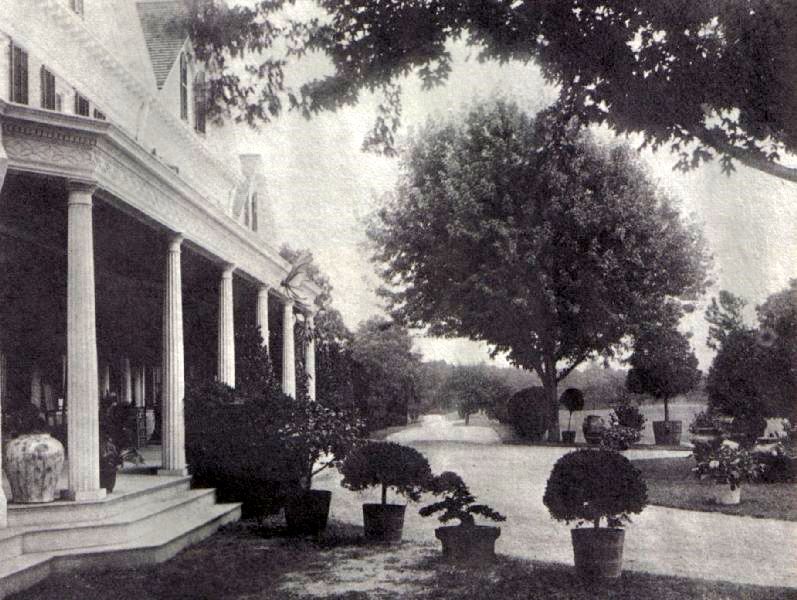
|
| In February of 1905, Frank Lloyd Wright made his first journey to Japan. During his trip, Wright experienced firsthand the architecture of local temples, shrines, gardens and residences. He documented these buildings and landscapes in an extensive photographic record of his time in the country. These forty photographs are the only existing images of Wright's trip. The 3-1/2 x 4 in. silver gelatin print here is of an "Unidentified Garden and Residence, Japan." 3 |
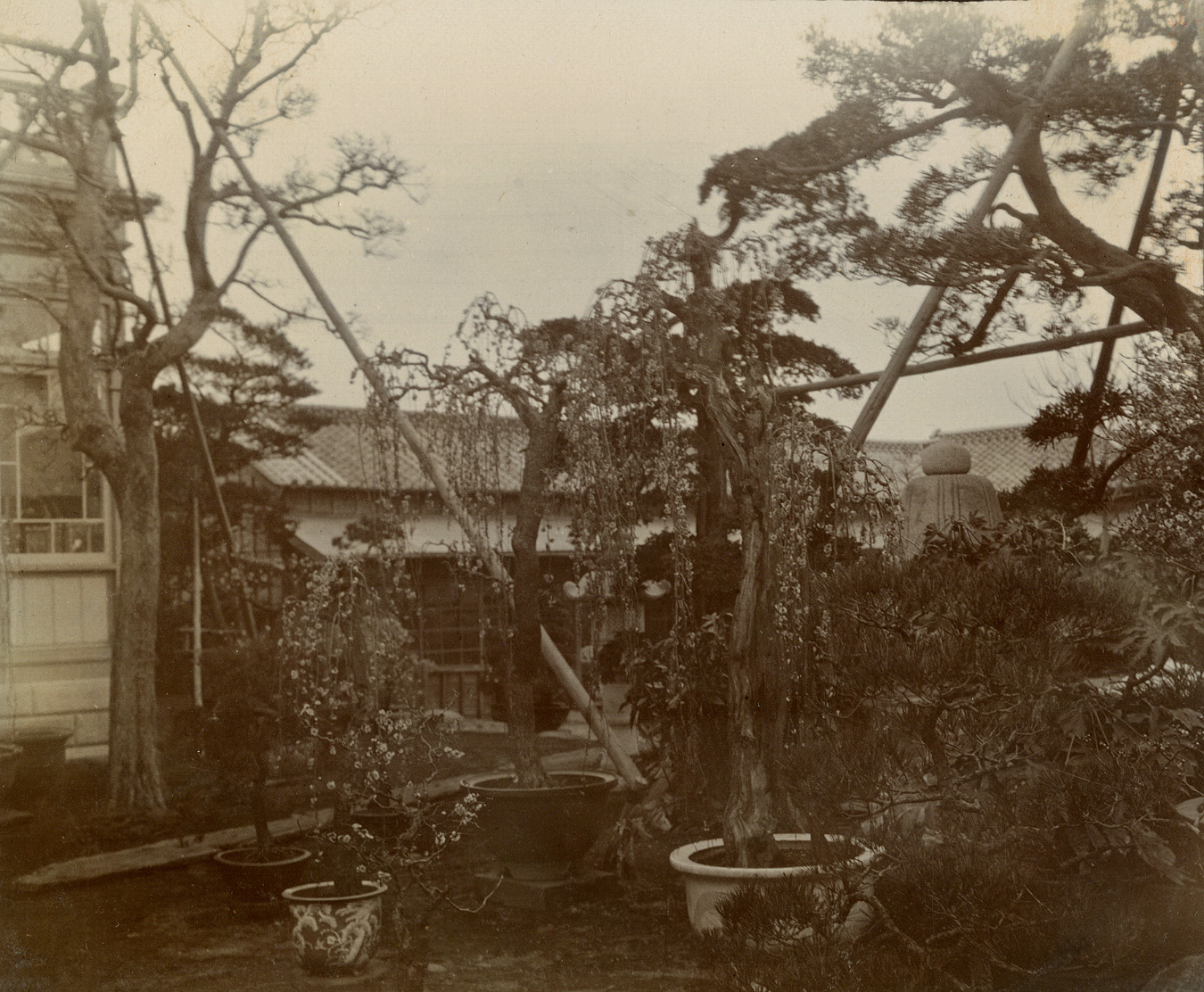
|
|
Dwarf trees (c.1907) in the garden of the Pu Chao temple, in the Tai Yang region,
at the holiest Chinese mountain of Tai Shan. The temple is
outside the town of Tai An and on the way up the mountain. The picture's caption implies that the conifer
(left) is a bonsai but the broadleaf to the right is not. No other details are given about these dwarfs.
[The aged pine tree to the right of and behind the conifer and hanging over both potted trees is said to date
back to the late Tang dynasty (923-36 C.E.). (At the Tai temple nearby are six
cedars, said to have been planted by Emperor Wu of the Han dynasty, c.180 B.C.E.).]
To the Chinese, the writhen, contorted appearance of these old and almost lifeless [full-size landscape trees']
trunks is worthy of lengthy contemplation, revealing qualities of fortitude and grandeur comparable to the
worn yet enduring stones of the mountain-side.
4 |

|
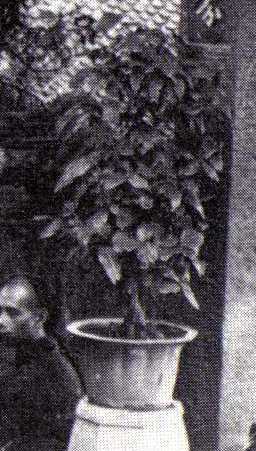
|
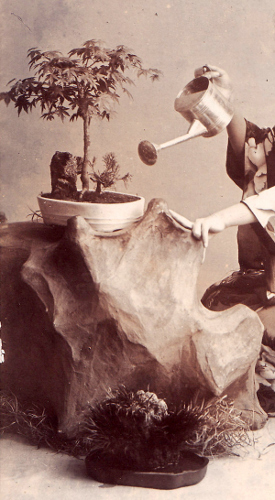
|
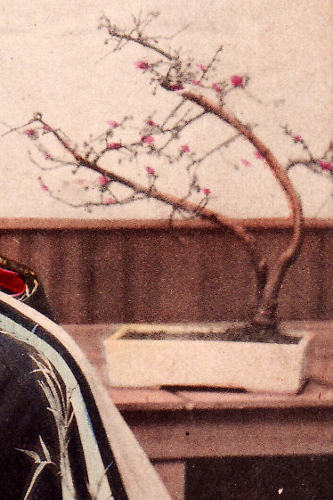
|
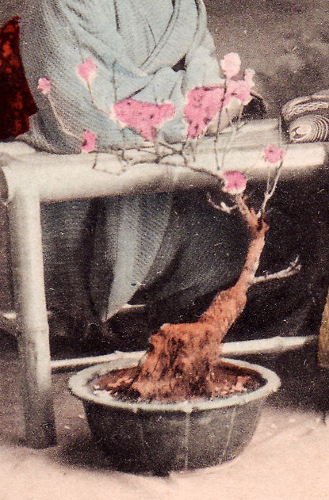
|
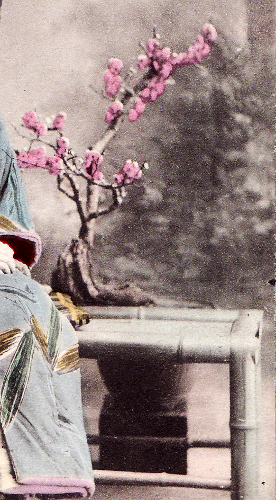
|
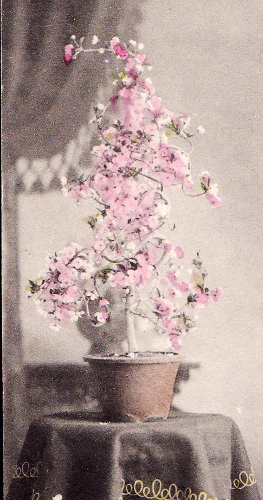
|
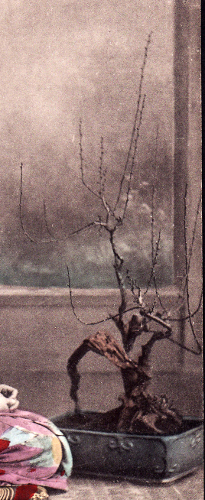
|
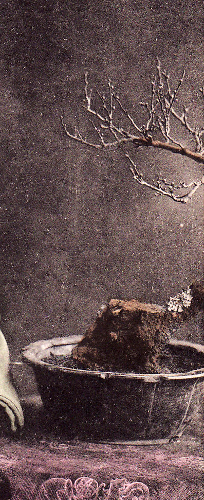
|
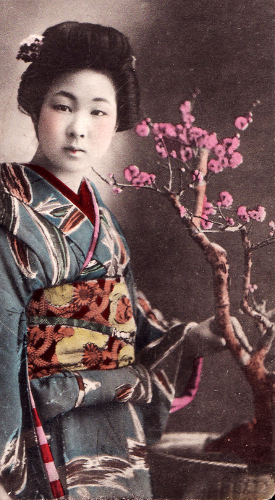
|
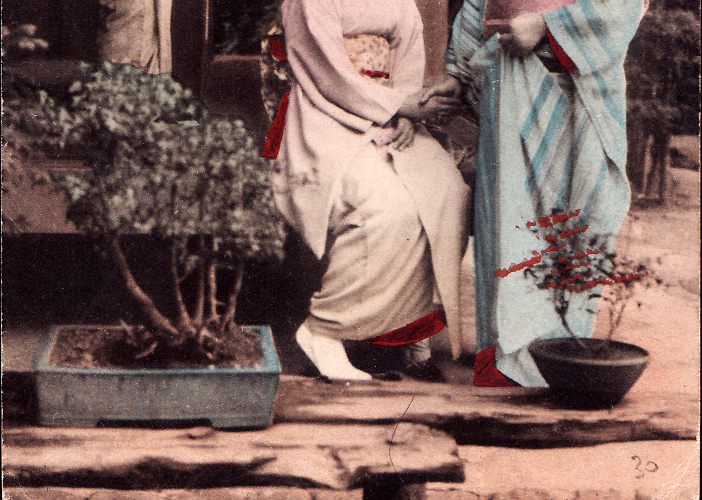
|
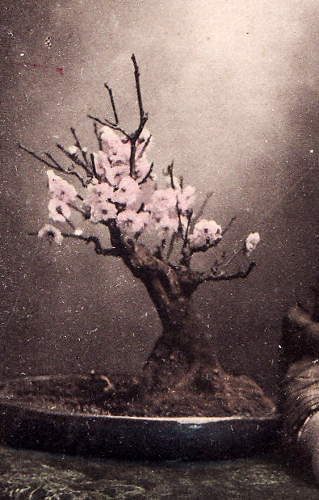
|
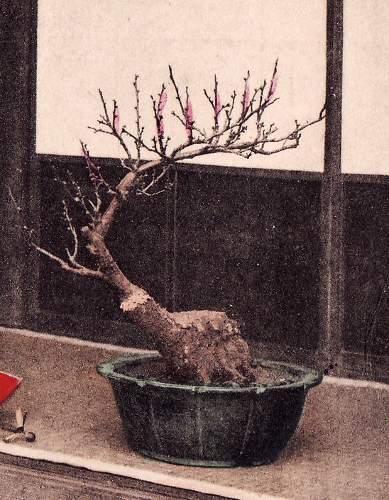
|
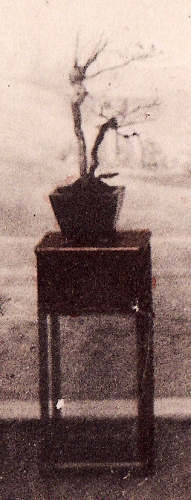
|
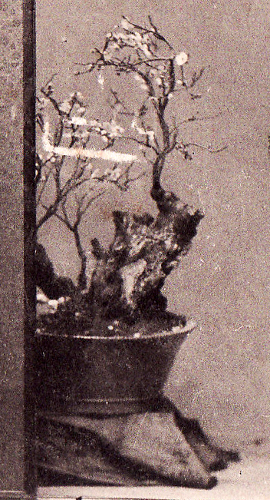
|
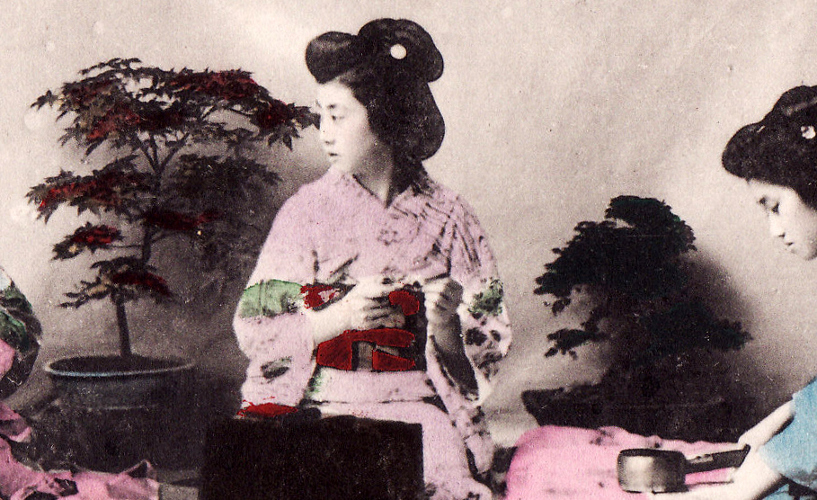
|
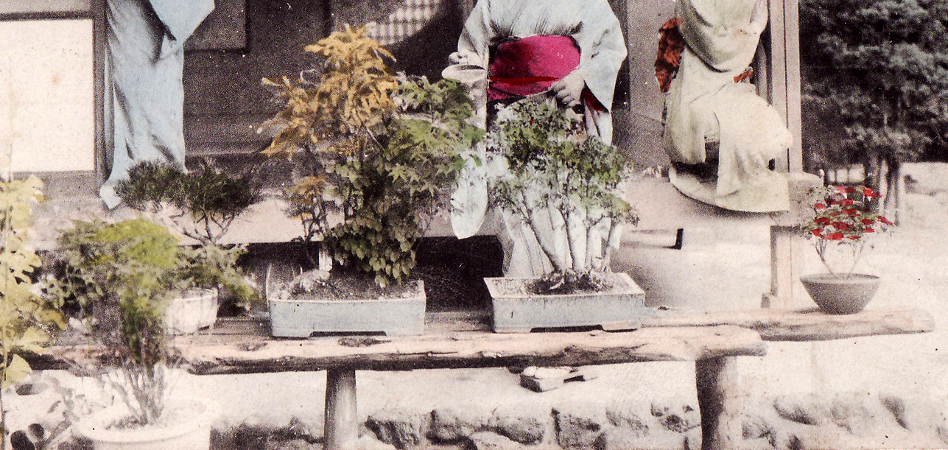
|
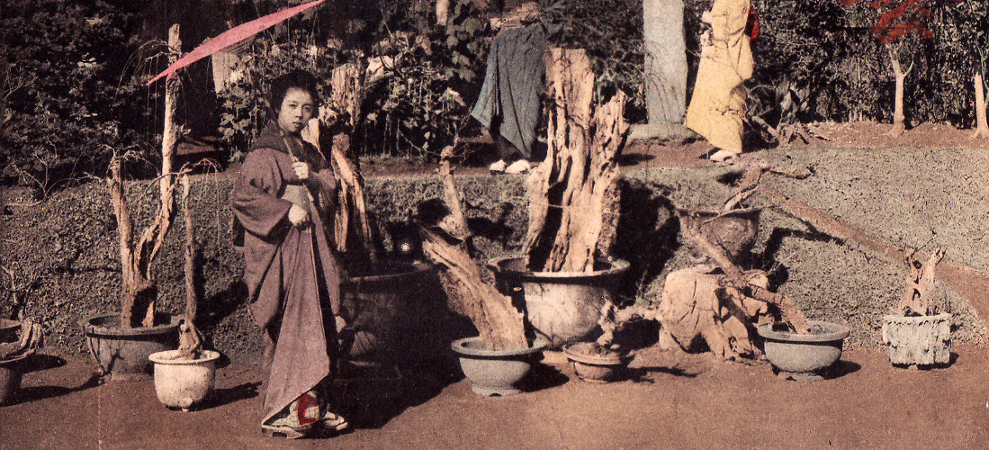
|
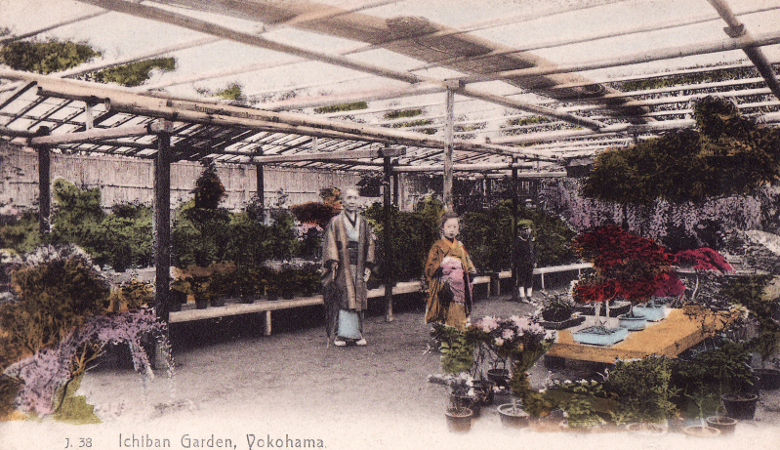
|

|
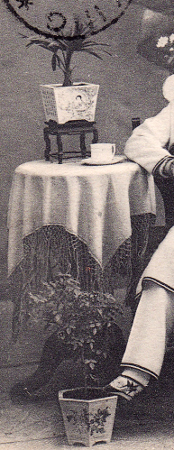
|
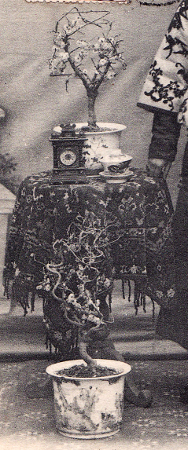
|
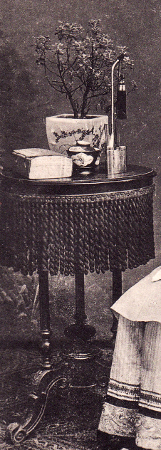
|
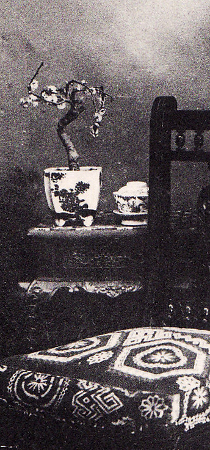
|
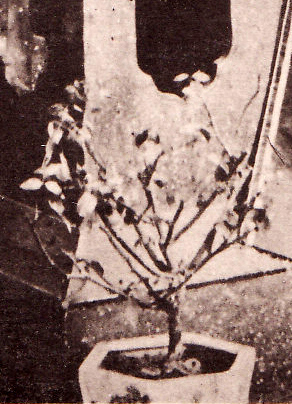
|

|
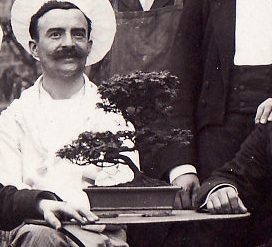
|
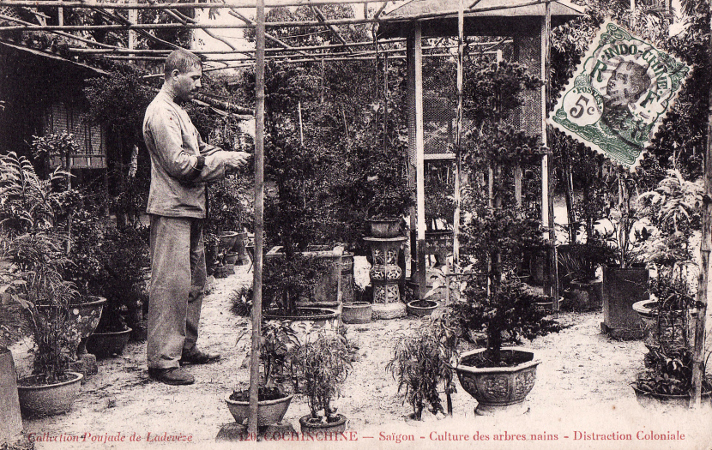
|
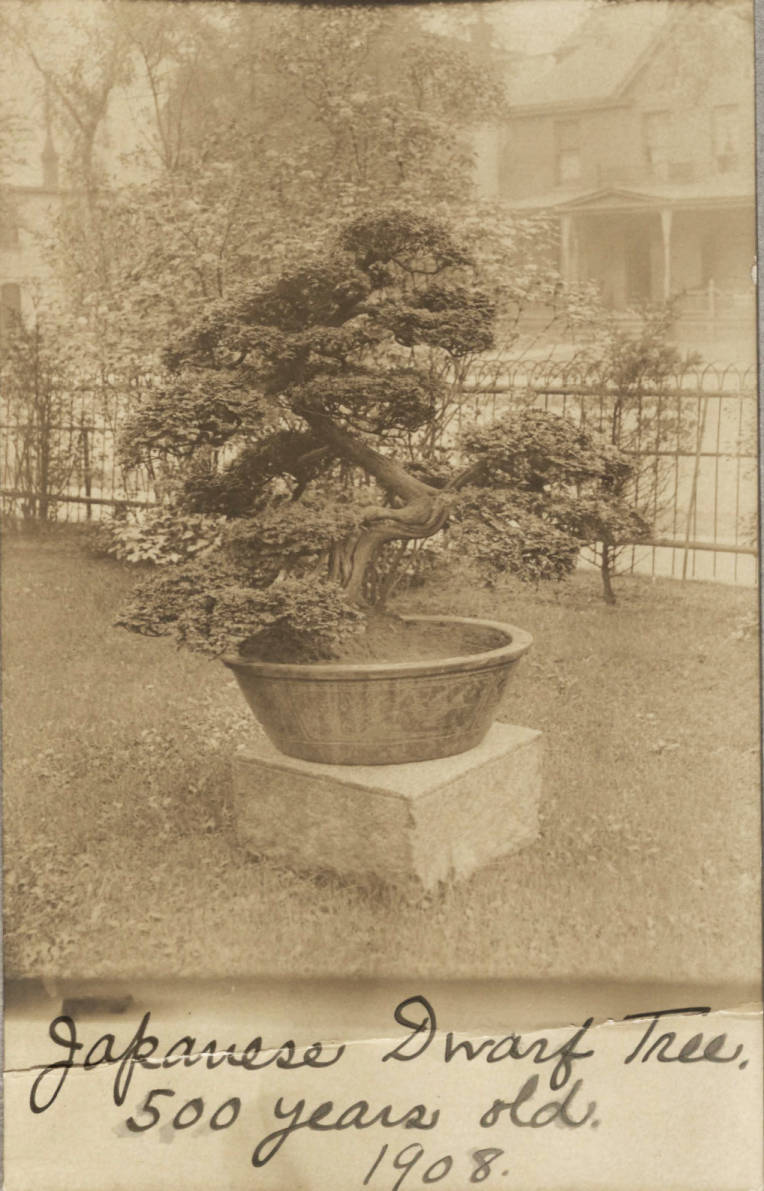
|
|
In the mid-1890's, Bradstreet together with Frank Waterman and Fannie Jaquess incorporated under the name John S. Bradstreet and Company. Two years later, Bradstreet secured a ten-year lease at a residence at 327 South Seventh Street in Minneapolis with the intent of opening his studio, showroom, and warehouse inside the stately home. First, he would need to remodel the building to suit his vision. Bradstreet spent the next several months transforming the Italianate-style villa into an Oriental retreat. He redesigned the facade of the house, constructed a large, attached shop and showroom, and installed electricity. Intense interest from his new neighbors and excited patrons made for an enthusiastic grand opening of the John S. Bradstreet and Company Crafthouse in January of 1904. Outside, the Crafthouse's Japanese gardens were lit by paper lanterns. A pond and rock garden were surrounded by shrubs, plants, and potted dwarf trees. A stream of water fell from the mouth of a bronze dragon that stood in the middle of the pond. A small bridge -- made from discarded planks of wood used by the Japanese government during the St. Louis Exposition -- served as a walkway over the pond. These items were unobtrusive in the garden but became a delightful focal point. Bradstreet often enjoyed informal meetings with his craftsmen in the garden because of its natural tranquility. 9 |
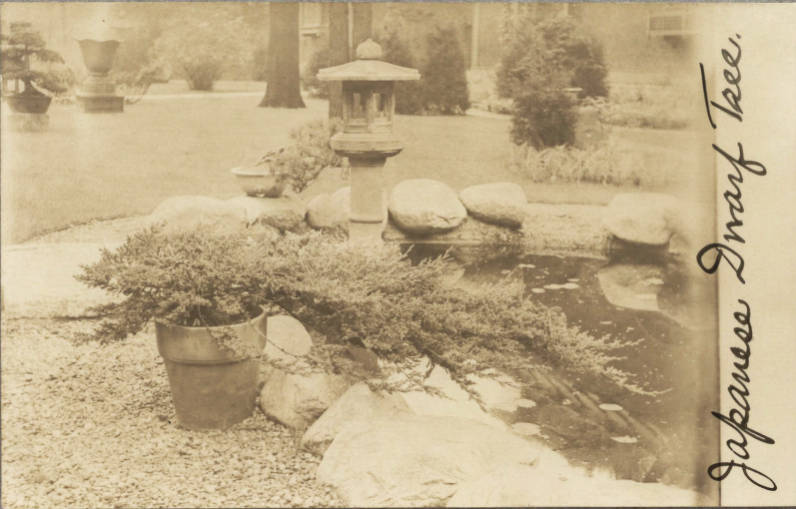
|
| John S. Bradstreet 10 |
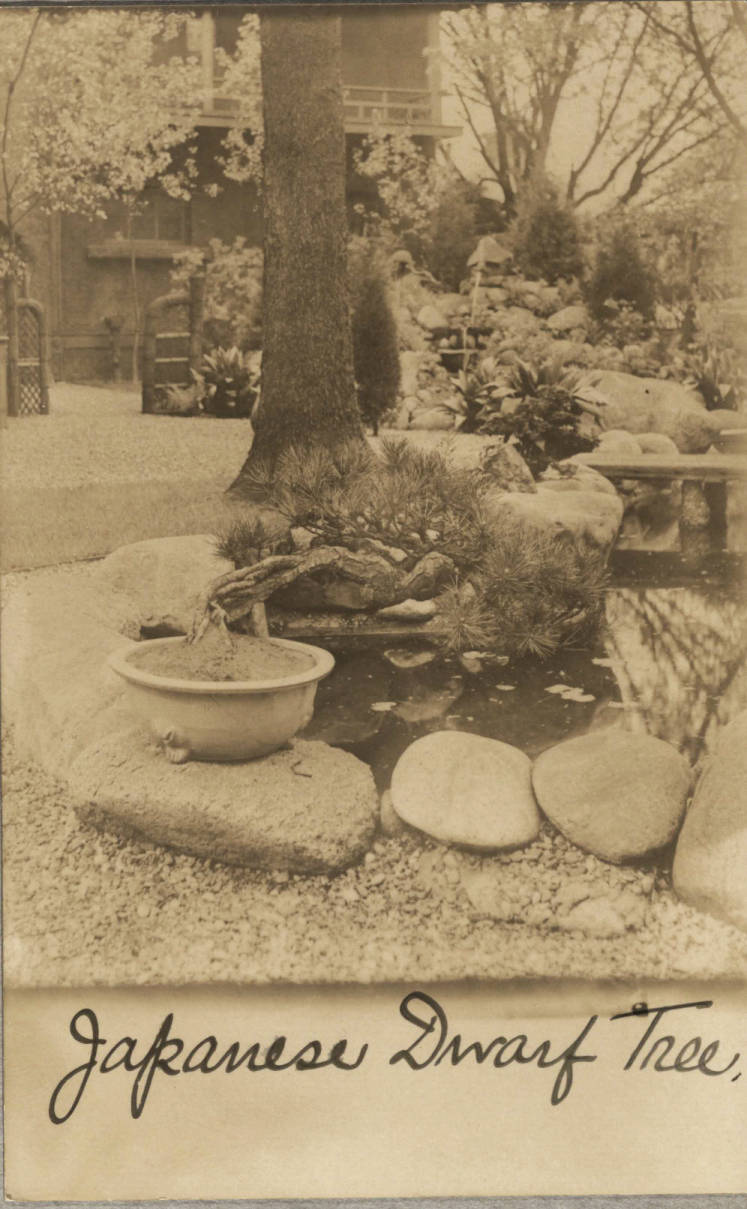
|
| John S. Bradstreet 11 |
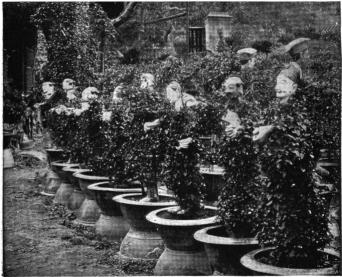
|
| Trained in the form of life-size human figures, with limbs, arms, and trunk, provided with highly glazed and colored porcelain feet, hands, and head. These, with many other potted plants and trees, including dwarf varieties, are grown under outdoor lattice shelters in different parts of China, for sale to the wealthy Chinese families. 12 |
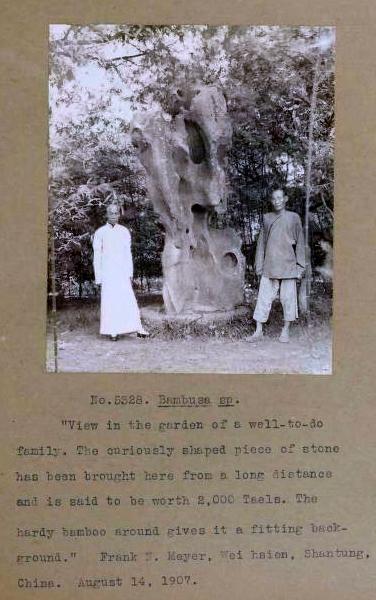
|
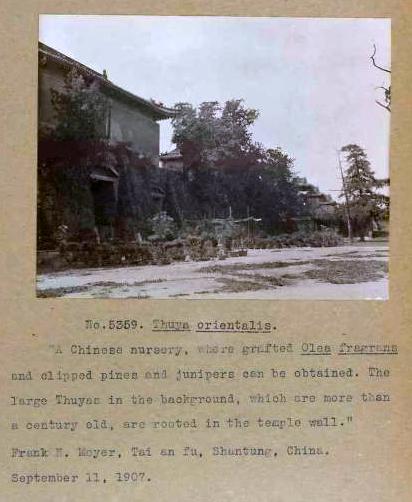
|
|
5328
|
5359
|
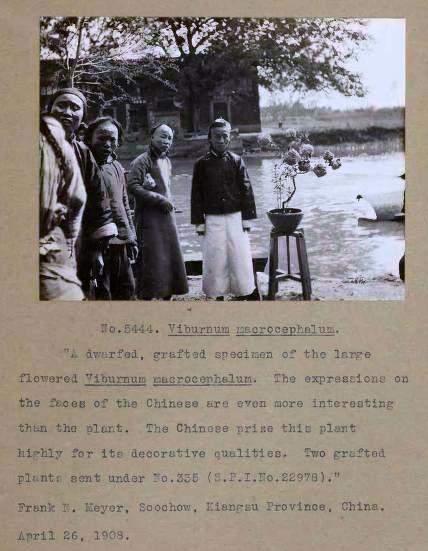
|
|
5444
|
| Frank Nicholas Meyer (30 November 1875 -- 2 June 1918) was a United States Department of Agriculture explorer who traveled to Asia to collect new plant species. 13 |
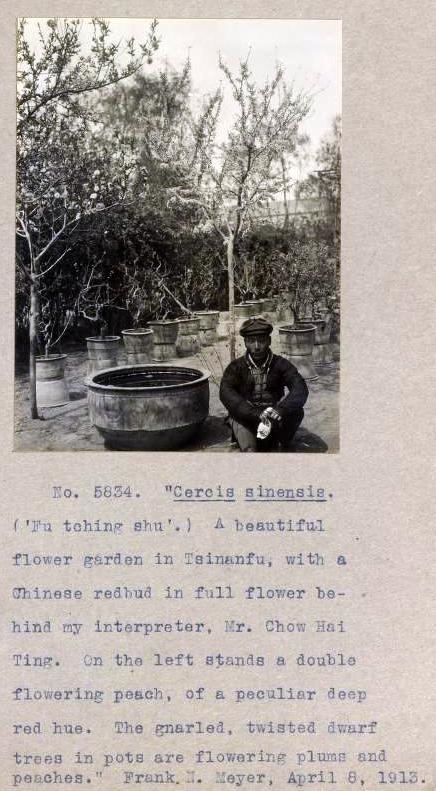
|
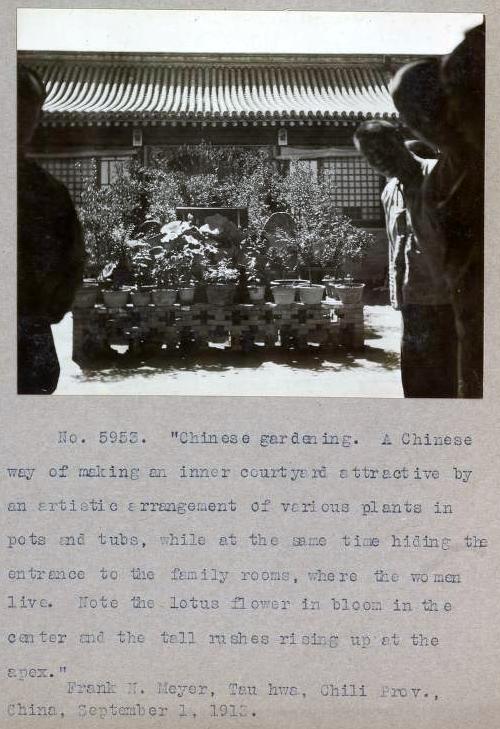
|
|
5834
|
5953
|

|
|
6000
|
| Frank Meyer 14 |
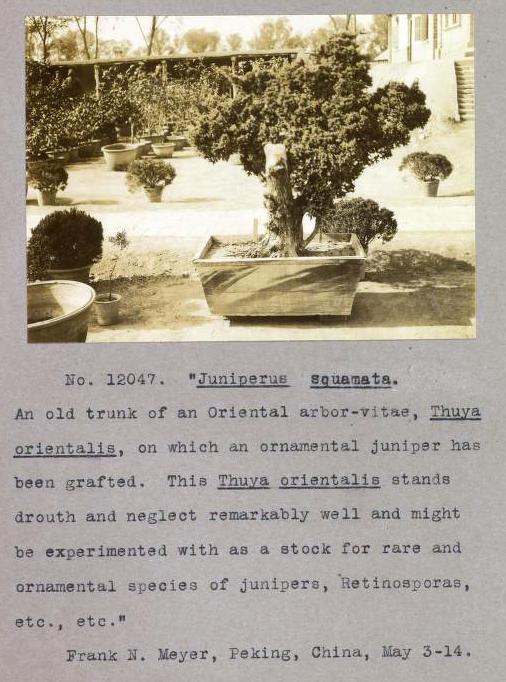
|
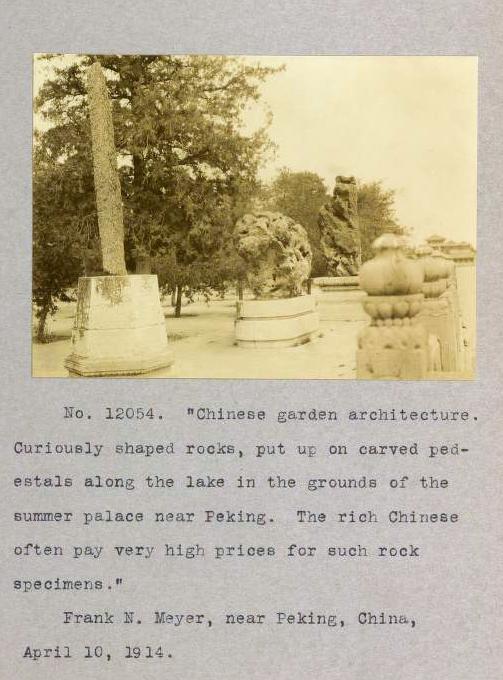
|
|
12047
|
12054
|
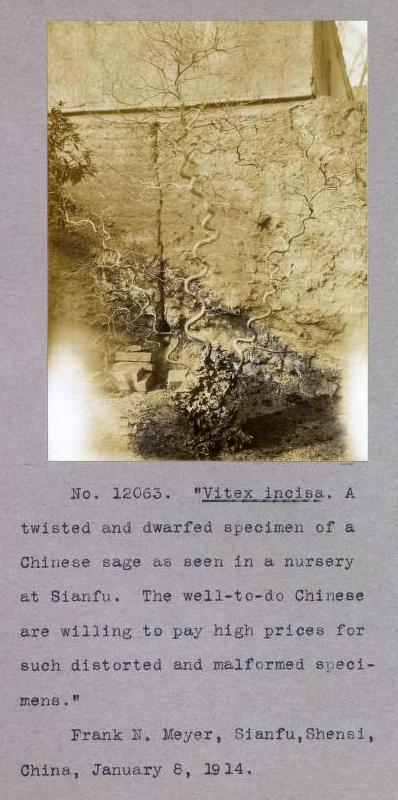
|
|
12063
|
| Frank Meyer 15 |
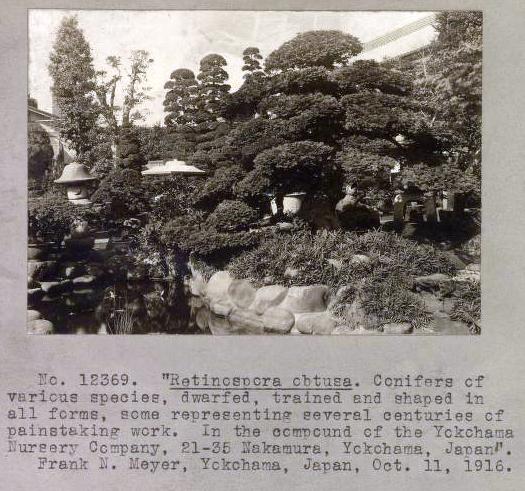
|
|
12369
|
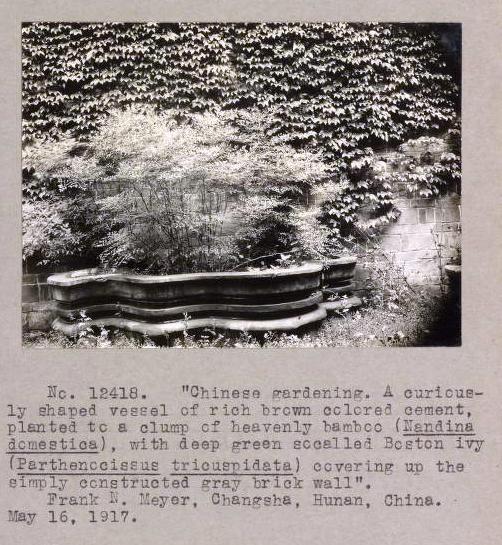
|
|
12418
|
| Frank Meyer 16 |
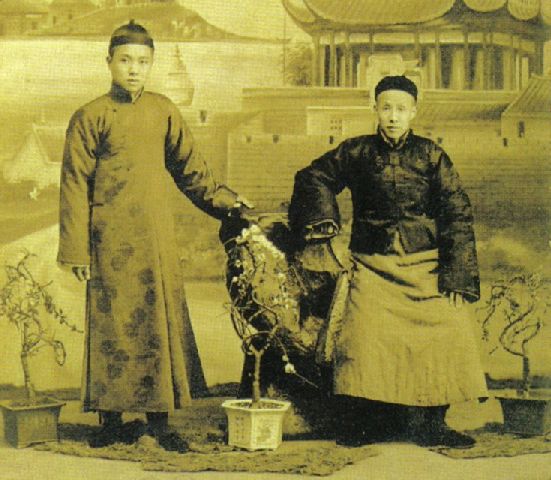
|
|
Huang Zizhi (r) and his son Huang Zhenxin, Feb. 28, 1934, visiting Huang He Lou, the Yellow Crane Tower in Wuchang. They had their photo taken in front of a painted cloth backdrop of the building, pots of plum blossoms which bloom at New Year were placed at their feet. This was on the fifteenth and last day of the New Year festival, just weeks before Huang Zizhi was fatally assaulted at the pier on their way to Shanghai. (Standing on a wharf, having just closed his six-year-old Ju He Dian, the Assembling Pawnshop, and divided the profits and valuables with his two partners, he was set to board a boat up the river to Shanghai where he would start anew. [The worldwide depression of the 1930s eventually had caught up with the international treaty port of Hankou, in Hubei province to the east of Shanghai. By 1934 floods, civil war between the Nationalists and the Communists, and the general decrease in trade brought understandable anxiety to the merchants. The Yangzi River flooded in 1931, bringing devastation to the port city and beginning a financial downward spiral.] Laden down with suitcases and trunks filled with his treasures, Huang Zizhi sent his twenty-year-old son off to purchase a bit of strong grain liquor. The elder was then approached by an aggressive porter. The porter, typical of most on the Yangzi River piers, grabbed the suitcases from Huang Zizhi's hands. The merchant was determined not to let go of his hard-earned possessions. He pulled back. The porter, angered, rammed a fist into Huang's face and then battered him severely... Despite much administering by doctors and his son's fervant care, Huang Zizhi, at the age of fifty-two, never recovered from the infections rising from a seriously wounded chest and passed away a month later. He died in the small Shanghai hospital he was hurried to after the incident. Like his own father, he had suffered and died from the hazards of being a Huizhou merchant, on the road and away from home. According to Huang Zhenxin, "My father was too stingy. He did not like to spend any extra money. Had he given them (the porters) some money, he would not have been beaten to death.) 17 |
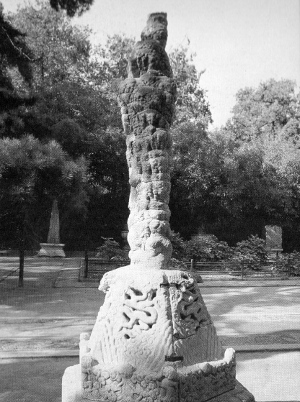
|
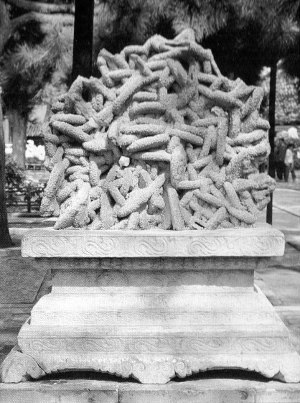
|
|
124
|
125
|
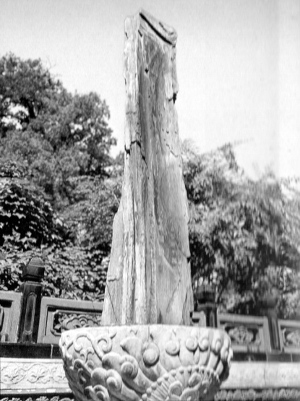
|
|
126
|
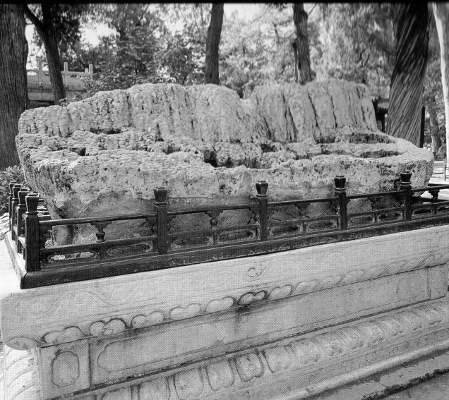
|
|
127
|
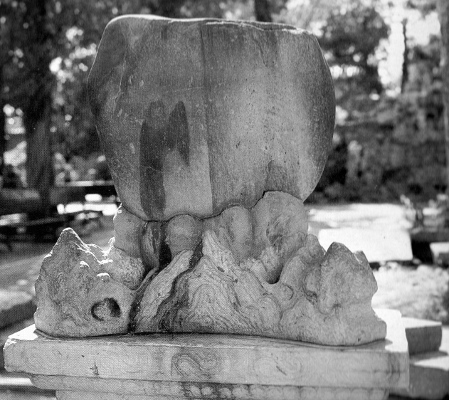
|
|
128
|
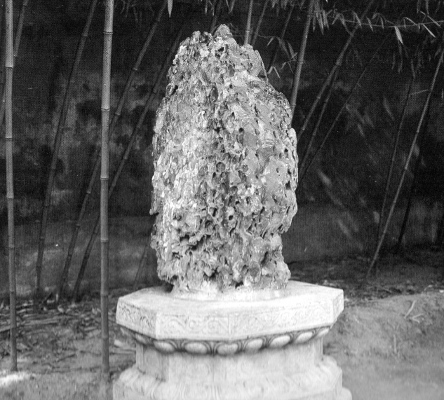
|
|
129
|
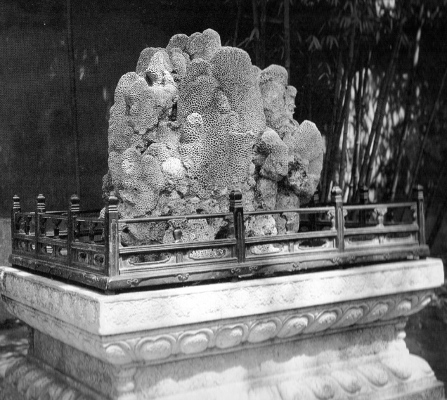
|
|
130
|
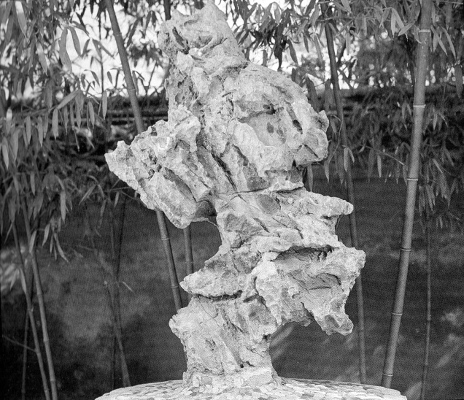
|
|
131
|
|
"However, the one bearing the title, 'Zhuge Liang paying his respects to the meteorites of the Big Dipper' (Plate 131) is not noted for its naturally craggy surface but for the way in which its silhouette resembles a man bowing with knees bent. Another, prized for its strange yet natural appearance, is the 'sea cucumber' pen jing which stands in front of the bronze goat on the eastern side of the Imperial Garden. It consists of a pile of fossilized sea cucumbers which, having a plant textured appearance, seem to writher and squirm naturalistically (Plate 125). "Facing the Pavilion of Red Snow, a piece of petrified timber is mounted on a hemispherical carved stone base (Plate 126). From a distance it looks like a real split piece of timber, long exposed to sun and rain with thousands of holes bored by insects. But it gives out a clear sound when struck and genuinely is stone. On one side of it there is an inscription by the Qian long emperor with a cyclical date corresponding to 1766." "The Imperial Garden is on the north central end of Beijing's Forbidden City, the imperial palace complex of the last two dynasties of China and lying at the center of the capital. It was from here that fourteen Ming and ten Qing dynasty emperors issued edicts and ruled the Middle Kingdom for 491 years. One of four main gardens in the Forbidden City, the "Imperial Garden was called the 'Palace Rear Garden' in the Ming dynasty. Built at the same time as the Ming palaces and halls, it still retains its original character even after many renovations. Many of the buildings, trees and stones in this garden have survived from the fifteenth century. The garden measures 80 m. from north to south, and 140 m. from east to west. The main building in the garden, the flat-roofed, double-eaved Hall of Imperial Peace, is situated on the central axis of the Forbidden City, with nearly twenty buildings arranged symmetrically to the east and west. As most of the buildings are set against the palace walls, the garden looks very spacious." "A kind of white marble, han bai yu, of unusually high quality was used for the stands bearing strange rocks or 'miniature landscapes' (pen jing)." 18 |
|
NOTES 1 "Chinese Lady," The Miriam and Ira D. Wallach Division of Art, Prints and Photographs: Photography Collection. 2 Doell, M. Christine Klim, Gardens of the Golden Age, Ninetenth-Century Gardens and Homegrounds of New York State (Syracuse University Press; 1986), pp. 160-162, photo from 7.20 pg. 166. 3 "Unidentified Garden and Residence," Collection of the Frank Lloyd Wright Trust. 4 Thacker, Christopher The History of Gardens (Berkeley: University of California Press; 1979), pg. 44-45, Fig. 22, above images being detail from the bottom left and center portions of the photograph. From Views of the Taishan and Kufou, compiled and photographed by Tse Tsi Shau, 1907; one of only five copies, this one presented to Col. L.M. Codgrave, DSO. The town of Ku Fou in Shantung Province near Tai Shan is where Confucius spent most of his life. What was originally a sacred grove is now a garden that surrounds the great philosopher's tomb, which is north of Ku Fou. A symbolic treatment of both rocks and trees is found in this, one of the oldest gardens to survive anywhere in the world. The erection of memorials and temples in his honor began soon after his death in 479 B.C.E. 5 Assorted postcards, postmarked c.1904-1915, posted on Internet Bonsai Club Forum 03 Jan 2010, http://ibonsaiclub.forumotion.com/t5214-postcards-centenaries#52635 by Michel Toche, Belgium. The source of the copies found above on this page are from a CD generously compiled and sent to RJB by Michel, late 01/2011. The third last picture is also labelled as "Japanese Girls with Bonsai" at http://www.allposters.com/-sp/-Posters_i883252_.htm. 6 Ibid. 7 Ibid. 8 Ibid. The stamp is from 1907, per "Indo-China," pg. 994 of Scott Standard Postage Stamp Catalogue, 2011, Vol. 3, G-I. 9 "Statue of the Goddess Diana" [sic], Fannie M. Jacques Collection of John S. Bradstreet Material (M/A 0010), 'Hennepin County Library.' 10 "Japanese Dwarf Tree," Fannie M. Jacques Collection of John S. Bradstreet Material (M/A 0010), 'Hennepin County Library.' 11 "Old English Window - Japanese Dwarf Tree," Copied from a window in Winchester, England. At the offices of John S. Bradstreet & So. Fannie M. Jacques Collection of John S. Bradstreet Material (M/A 0010), 'Hennepin County Library.' 12 King, F.K. "The Wonderful Canals of China," National Geographic Society, Vol. XXIII, No. 10, October, 1912, pg. 939. 13 Meyer, Frank N. Foreign seed and plant introduction : China, Chico, California : June 1907 -- June 1908: nos. 5300-5456. 14 Meyer, Frank N. Foreign seed and plant introduction : Manchuria, and Shantung, Chihli, Shensi, Honan, and Shansi, provinces, China : Feb, 27 1913 to March 19, 1914: nos. 5811-6000. 15 Meyer, Frank N. Foreign seed and plant introduction : Shensi, Shansi, Honan, Shantung, Chihli and Kansu provinces, China : Dec 23 1913 to Jan 30 1915 : nos. 12001-12164. 16 Meyer, Frank N. Foreign seed and plant introduction : Japan -- China : Oct. 1916 to May 1917: nos. 12369-12429. 17 Berliner, Nancy Yin Yu Tang, The Architecture and Daily Life of a Chinese House (Boston, MA: Tuttle Publishing; 2003), pp. 79, 82-83, Fig. 85 on pg. 83. 18 Yu, Zhuoyun (chief compiler) Palaces of the Forbidden City (NY: The Viking Press and London: Allen Lane; 1982, English translation by Ng Mau-Sang, 1984), pp. 126-127 for Plates and related text; also pp. 18, 22, and 120. |